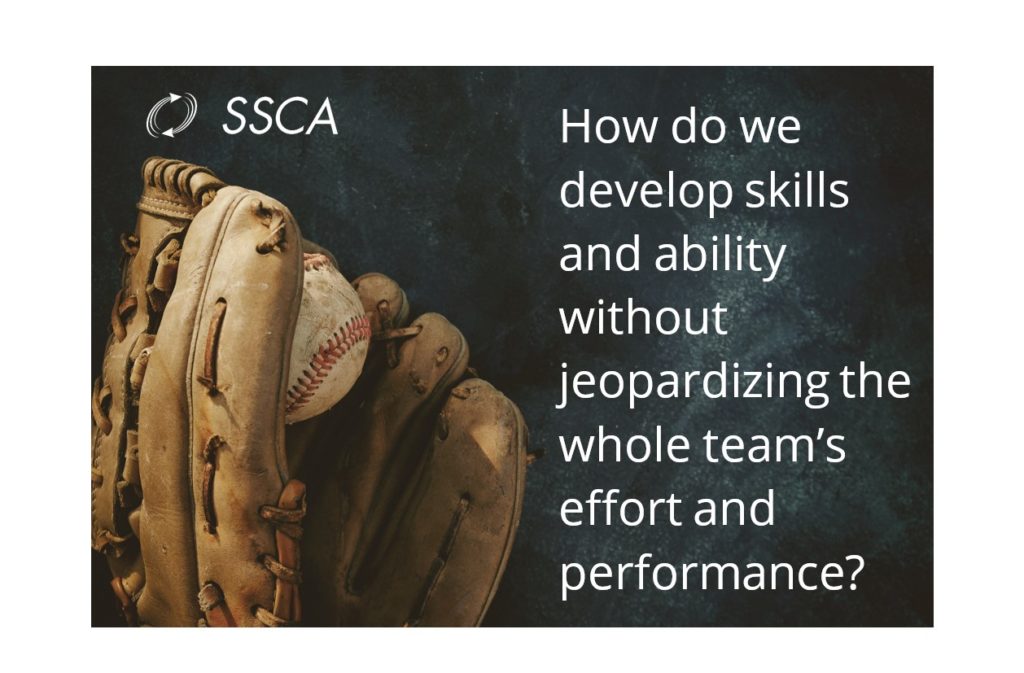
[vc_row][vc_column][vc_column_text]
By Tom M. Shenk & Tom H. Coble
We are already ahead by one run; it’s the last inning of the game and we have to make a pitching change. Who do we put in? Mike, who has the ability to get the ball over the plate, or Greg, who repeatedly asks to pitch and shows great enthusiasm, but doesn’t have the skill of Mike?
It is springtime, Little League baseball season, and that time of year that we as coaches are faced with The Great Dilemma: Do we risk the team’s effort and performance for an opportunity to teach and develop? Put another way, how much are we willing to sacrifice in short-term loss for long-term gain? The next time you drive by one of these games, think of it as an outdoor workshop in leadership and management. A place where the coaches are trying to find a balance between their many goals and objectives.
The dilemma continues. Is it our role to manage to win or to coach for the fulfillment of long-term potential? Our purpose is often to create a balance between these sometimes-competing objectives.
It is the establishment and maintenance of standards that tend to be most illusive for us as managers. This is often the variable seen in high-achieving organizations. Who do we choose to pitch, Mike or Greg, and still be true to our role objectives? This is truly the great dilemma every coach faces? How do we develop skills and ability without jeopardizing the whole team effort and performance? How do we protect the one-run lead and win the game?
“Mike, get your glove and warm up.” It’s that simple. We play the players who are best qualified to play a position. What about Greg and his long-term development? How would he feel if he entered the game and blew it? Everyone would have been upset and our standards for individual and team performance would be lower in the future. There is a better place to give Greg a chance to develop his pitching skills than at the end of a tight game. That place is at practice.
There we will set a performance standard for Greg and begin a program to help him meet his new goal. When he can pitch the ball within the strike zone three out of seven pitches, with the batter at the plate, we will put him in the rotation. An interesting thing happened, his teammates understood immediately and became supportive of his efforts, cheering his successes and watching his progress. In addition, everyone noticed that standards were being enforced and they took their own performances more seriously.
Mike did protect the one-run lead. The performance of the whole team was protected. Greg is still trying to meet the standard at practice and is improving. He hasn’t pitched in a real game yet, but we bet that he will before the end of the season. Can you imagine how everyone will feel when Greg gets his first chance to pitch? They will feel that way because Greg earned the opportunity. In this case, how we won was through coaching!
[/vc_column_text][/vc_column][/vc_row][vc_row][vc_column][vc_column_text]
[/vc_column_text][/vc_column][/vc_row]